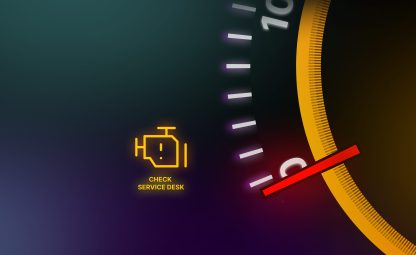For over a decade, people have been asking ‘Is the IT service desk dead?’ With the rise of AI, automation, DevOps, and self-service, it is easy to see why. Some argue the desk is irrelevant, that “AI can handle the issues,” or that “DevOps replaced ITSM ages ago.” Others point to XLAs as proof that the old ways of managing support are finished.
Yet the reality is more complex. The service desk is not dead, but neither is it unchanged. It is evolving and, in many cases, thriving as technology and expectations shift.
Research insights
The debate over whether the service desk is “dead” often overlooks what research actually shows. AI and automation are reducing repetitive tickets, but they are not removing people from the picture. One study found the “complement effect of AI skills is up to 50% greater than the substitution effect” (Arxiv, 2024). In other words, AI is extending what people can do rather than simply replacing them.
At the same time, adoption is still immature. “Only 1% of organisations are mature in AI deployment” (McKinsey, 2024). In the UK public sector, just “22% report using AI,” and “16% worry about it replacing roles” (Arxiv, 2024). Interest is high, but most organisations are still testing and learning rather than transforming.
Perhaps most telling is the employee’s view. According to Forrester (2024), only “55% of staff feel fully supported by their current service desk”. This shows a gap in confidence that automation alone cannot close. If anything, it highlights the continuing need for human-centred support alongside technology.
The state of the service desk
On a global scale, the service desk remains a huge industry. There are estimated to be 0.5 to 2 million IT help/service desks, employing 20 to 25 million people. Approximately 279,000 vendors operate in this space, supporting a global market valued at $20–30 billion USD.
If the service desk were truly obsolete, these numbers would look very different. Instead, they show that while the model is under pressure, it’s far from gone. To understand its future, we must examine its past.
Past, present, and future
The service desk has gone through several stages of development.
- In the 1980s and 90s, many service desks were set up mainly to save money. Staff were often the least technical, tools were limited, and trust was low.
- In the 2000s and 2010s, ITIL became mainstream, and professionalism improved. SLAs and benchmarking emerged, but tool use remained weak, and reporting was often misleading.
- By the 2010s and 2020s, Covid accelerated self-service and shift-left. Knowledge management and automation gained traction, and the desk achieved stronger recognition, with improved roles and a more positive image.
- Today, service desks are part of projects, design, and transition. They utilise AI and DEX and are increasingly valued for problem and knowledge management.
This history shows a pattern of renewal rather than decline. The future will be no different.
Automation and AI: technology versus human interaction
Automation is now a vital part of modern service desks. It can handle repetitive requests, triage, and routing far more quickly than manual processes, and it helps reduce technical debt. Robotic process automation is effective in these areas but often accounts for less than 5% of a process.
Chatbots are another area of experimentation, but they remain limited. The complexity of diagnosis, logging, escalation, and human interaction means they are still years away from being able to replace service desk staff.
This is why data quality is so important. No automation or AI tool can succeed without a strong foundation in knowledge management and configuration data. Many IT organisations still lack this foundation, which makes it difficult to scale automation effectively.
Even where automation is advanced, the human element remains central. As the number of interactions between people decreases, the quality of those interactions matters even more. Empathy, clear communication, and business focus are the qualities that shape customer experience, and no robot can deliver these.
Skills for the future
Looking ahead, successful desks will need more than technical expertise. They must bring together:
- Human skills such as problem solving, collaboration, emotional intelligence, and service orientation.
- Business skills such as financial awareness, risk management, contract negotiation, and relationship management.
- Communication skills to build trust, maintain customer focus, and manage expectations.
This mix of skills will only be achieved if organisations invest in reskilling. This includes AI and data, as well as governance, stakeholder management, and communication.
A human-centred service
The service desk of the future is not just a technical function. It’s a centre for business and people enablement. To achieve this, service desks should:
- Use multi-layered support models that combine self-service, AI, and specialist expertise.
- Redesign themselves as business-focused and people-focused services.
- Create new roles such as AI supervisors, DEX analysts, and experience managers.
- Shift metrics from SLAs to XLAs, with clear attention to employee and digital experience.
- Embed governance, ethics, and security into every stage of AI adoption.
Conclusion
The service desk is still alive, but it’s evolving fast. Automation will reshape certain aspects, but the real value lies in people, experience, and effective business management. The opportunity is to grow into a human-centred capability that supports both technology and the people who use it.
The question is not whether the service desk is dead or alive. It’s how we choose to shape its next stage of life.




